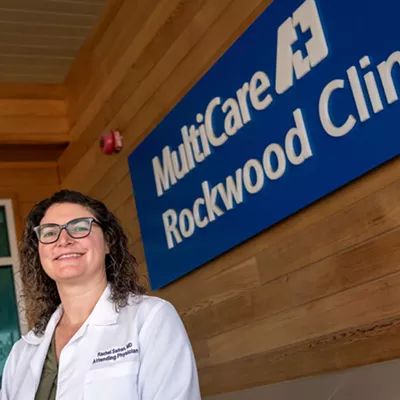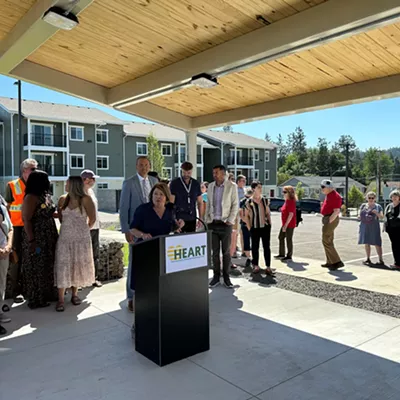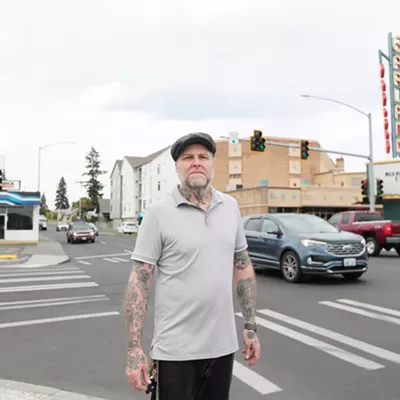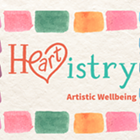You've gotta love the title Inland Craft Warnings. It brings to mind such old sailor adages as "red sky at night, sailor's delight; red sky at morning, sailor take warning," and "mare's tails and mackerel scales make tall ships take in their sails." Even if you don't know port from starboard, there's also something appealing about the image of tugboats chugging down Spokane Falls Boulevard and barges cutting off traffic on Maple. Of course, Inland Craft Warnings doesn't refer to that kind of craft, but rather the kind you make with your own two hands. But even here, it's also kind of tongue in cheek: warning, bad crafts ahead. Turn left or you'll run into the pot holders crocheted out of yarn and six-pack rings; duck before you're hit in the head by macrame wall hangings and enormous plant hangers.
Fortunately, those kinds of "crafts" have never been a problem at Inland Craft Warnings. This fall the event celebrates 20 years of bringing the finest art quality crafts -- things like beautifully polished wood furniture, art ceramics, handmade jewelry and one-of-a-kind clothing -- to the folks of the Inland Northwest. So where, one wonders, does that name come from?
"The first year we did it, we had a heck of a time coming up with a name," says Louise Kodis, one of ICW's founding members and herself a working artist. "My brother is a graphics artist, and he had just moved back to Eastern Washington from the coast. He came up with 'Inland Craft Warnings,' with the subtitle 'look out, good art is on its way.' "
In the early days, it seemed a warning was in order. There were few opportunities for craftspeople to show their work, besides the occasional gallery or summer arts festival. And back then the word "crafts" hadn't quite recovered the sophistication it had earlier held this century when aligned with the Arts and Crafts movement.
"We were seven people, each of us working in a different medium, with nowhere to show our work," says Kodis. "Occasionally there would be a gallery where one of us would land a show, but it was so sporadic. So we decided to start an event."
So start an event they did. And while their beginnings were humble, they rightfully see 20 years as the achievement it is. According to the purple fact sheet in their press kit, they've been "visited by "33,328 patrons," been contributed to by "193 artists" and "sold $1,048,900 of fine contemporary crafts." The secret to their success lies as much in the behind-the-scenes work as it does in the well-wrought art pieces the festival attendees see.
"After Inland Crafts is over, we have our wrap-up meeting and that's where we start talking about what we want to do next year," she says. "It's really a 12-month process."
Another factor that plays into their enduring popularity is the good old-fashioned power of gossip. There are many art shows on the West Coast -- some of them good, some of them a comedy of errors.
"There's a lot of word of mouth. The artists talk to each other about what show is good, and Inland Craft Warnings is considered one of the more worthwhile shows. Our town is very respectful, it's well-attended and people ask good questions and are enthusiastic about what they see."
Which is not to say that it's always been easy. Kodis laughs when she recalls "the early years." She says that initially they weren't big enough for the Convention Center and that they used "a number of the city's fine institutions," places such as the Glover Mansion and the Waikiki Retreat House. These places were architecturally interesting and provided a charming backdrop to the art, but posed specific technical challenges.
"All we did is blow fuses. It was truly a problem. It happened at the Women's Club, too -- it was back before they used to use that building for a lot of different things -- and there was never enough electricity to supply all the exhibitors, who wanted to light up their displays. So we'd be there, and the show would suddenly go dark."
These days, Inland Crafts (as they're beginning to call themselves) is gigantic enough for the echoing chambers of the Convention Center. And also, for dozens of returning favorites, folks like Gay Waldman, whose new floral photography studies are edgy, colorful and hip, and metalsmith Peter Jagoda, whose knives are as wickedly cool as they are utilitarian.
But lest you think to yourself, "If I've seen one Inland Craft Warnings show, I've seen 'em all," think again. This year's show -- featuring 70 exhibitors -- is the biggest yet, with 20 new artists. Kodis is especially pleased to note that fellow fiber artist Kathy Edelman Hutchinson will be here for the first time. Hutchinson's handcrafted fiber garments offer an intriguing mix of tone, texture and style. In a similar vein, Snohomish artist Beth Cassidy does contemporary quilts that incorporate minimalist design and opulent fabrics. Kodis notes that the participation of artists such as Hutchinson and Cassidy marks a new trend in Inland Craft Warnings.
"You see this a lot in fine contemporary craftsmakers. They might be regional, but they have tended in the past to go off into the four corners of the United States. But these days that's become much more expensive. So we're attracting the attention of people closer to home who haven't tried a sale in Spokane before."
But outside influences aren't the only thing responsible for Inland Craft Warnings' steadily rising level of sophistication. Like a nice sharp cheddar or a good French Bordeaux, age only makes things better.
"We are becoming more sophisticated, partly because, quite frankly, a lot of us are getting older and our art gets better over the years," says Kodis. "We're reaching critical mass for both the number and variety of exhibitors, we've got better people jurying with us and it's all of a higher quality than 10 years ago. And certainly 20 years ago."














